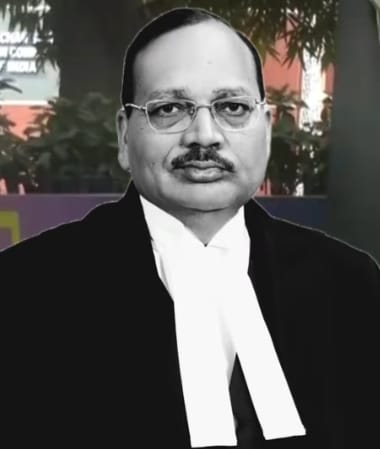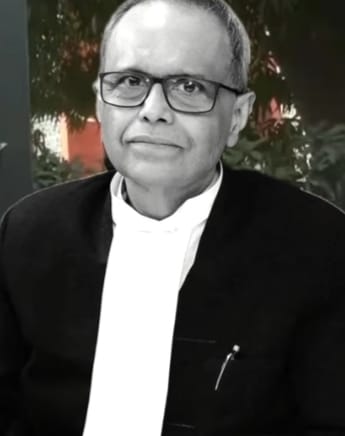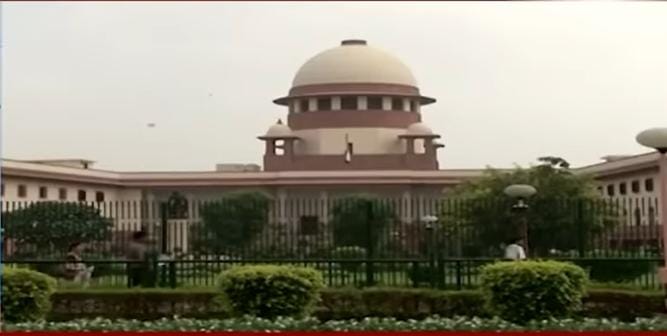Supreme Court’s Interim Directive Mandating Transparency in Bihar’s Voter List Purge
In a landmark interim order on August 14, 2025, the Supreme Court of India directed the Election Commission of India (ECI) to publish the names of approximately 65 lakh voters omitted from Bihar’s draft electoral roll following the Special Intensive Revision (SIR) exercise. The bench, comprising Justices Surya Kant and Joymalya Bagchi, emphasized the need for reasons behind each exclusion—such as death, migration, or duplication—and mandated that these lists be made searchable by EPIC numbers on district electoral officers’ websites. Additionally, the Court instructed the ECI to accept Aadhaar cards as valid proof for reclaiming voter status, overriding the commission’s earlier reluctance.
This directive, stemming from petitions by groups like the Association for Democratic Reforms (ADR) and political figures, underscores a push for electoral transparency amid allegations of arbitrary deletions.
The order comes against the backdrop of heated debates over the SIR process in Bihar, initiated to cleanse the voter rolls ahead of impending assembly elections. Petitioners, including ADR and RJD MP Manoj Kumar Jha, argued that the exercise lacked legal backing and disproportionately affected marginalized communities. The ECI, represented by Senior Advocate Rakesh Dwivedi, defended the SIR under Section 21(3) of the Representation of the People Act, 1950, and Article 324 of the Constitution, insisting no legal obligation existed to publish omission lists. However, the Court, prioritizing “voter confidence,” dismissed this stance, opting for proactive disclosure to dispel narratives of opacity.
Implications for the Ongoing SIR in Bihar
This interim order injects a layer of accountability into Bihar’s SIR without halting the process entirely, as some petitioners had sought.
The SIR, aimed at updating electoral rolls post the 2025 Lok Sabha elections, will continue, but under heightened scrutiny. By mandating publication of omission lists by the following Tuesday, the Court ensures that the final roll preparation—slated for release before assembly polls—incorporates remedial claims from affected voters. This could delay aspects of the revision if a surge in appeals overwhelms booth-level officers, but it aligns with the ECI’s own timeline for claim submissions.
Critically, the order addresses a core flaw in the SIR: the lack of public access to deletion rationales. Previously, such information was shared only with political parties’ booth-level agents, forcing voters to rely on intermediaries. Now, district-wise, booth-specific lists must be uploaded online and displayed manually at block development offices, fostering direct engagement. The inclusion of Aadhaar as an acceptable document expands the pool of proofs beyond the ECI’s initial 11, potentially streamlining inclusions for those without alternative IDs. However, as noted in the write-up, the order falls short of suspending the SIR, raising concerns that unchecked continuation could set precedents for similar exercises in other states.
Relief to the 65 Lakh Excluded Voters
For the 65 lakh voters—whose names appeared in the 2025 rolls but vanished from the draft—the order offers tangible relief. Accessibility is key: Lists searchable by EPIC numbers empower individuals to verify their status independently, without chasing political agents or navigating opaque portals. Reasons for exclusion must be specified, enabling targeted appeals—e.g., a “deceased” voter can prove otherwise with minimal hassle.
Wide publicity mandates—through vernacular newspapers, TV, radio, and social media—ensure awareness reaches rural and underserved areas, where digital literacy might be low. Manual displays at panchayat levels further democratize access. The Aadhaar provision is particularly transformative; it counters the ECI’s prior exclusion of Aadhaar citing Section 9 of the Aadhaar Act, which deems it non-proof of citizenship.
Yet, the Court deemed it a “statutorily recognized document for identity and residence,” easing burdens on underprivileged voters lacking passports or ration cards.
This mechanism could reinstate many, but challenges persist: Digital divides might hinder online searches, and the tight deadline for claims risks excluding the unaware. As ADR’s advocate Prashant Bhushan noted post-hearing, it’s a “major relief” allowing appeals with Aadhaar, but the fight continues for systemic fixes.
Ramifications for the Elections Commission’s Operations
The directive reshapes ECI’s operational ethos, compelling a shift from discretionary opacity to mandatory transparency. Historically, the ECI has wielded broad powers under Article 324, but this order signals that such authority isn’t unchecked. By requiring searchable lists—overriding the ECI’s reliance on the 2018 Kamal Nath judgment against searchable formats—the Court mandates tech-enabled accountability, potentially setting standards for future revisions nationwide.
Implications extend to resource allocation: The ECI must swiftly compile and upload data, publicize it across media, and process Aadhaar-based claims, straining infrastructure in Bihar’s 38 districts. This could prompt internal reforms, like enhanced data management systems, to prevent future litigations. Broader still, it challenges the ECI’s resistance to publishing omission lists, as argued in its affidavit, affirming that transparency isn’t optional but essential for institutional trust. As Justice Kant observed, “Transparency will help create voter confidence,” echoing the write-up’s view of this as a “jolt” to the ECI’s stance.
A Judicial Rap on the Knuckles for Defiance?
While not overtly punitive, the order subtly rebukes the ECI’s reluctance. The commission opposed publishing lists, citing no legal mandate, and resisted Aadhaar despite the Court’s July 10 suggestion. Justices Kant and Bagchi’s observations—questioning why voters must “run after local political parties” and urging disclosure to make “the narrative disappear”—highlight perceived intransigence.
This isn’t a direct “rap on the knuckles,” but an insistence on exceeding minimal compliance. By dictating steps “on suggestion by this Court” that the ECI “agreed to,” the bench frames it collaboratively, yet the undertone critiques defiance. The Supreme Court’s interim order is a “big blow” to the ECI and BJP, seen as shielding the commission, implying accountability lapses. Advocates like Gopal Sankaranarayanan and Vrinda Grover pushed for searchability, which the Court enforced, underscoring the ECI’s initial opacity as untenable.
Assertion of Judicial Authority Over a Constitutional Body
Undoubtedly, the order asserts the Supreme Court’s supervisory role over the ECI, a constitutional entity under Article 324. While respecting the ECI’s autonomy in electoral conduct, the judiciary intervenes to safeguard fundamental rights like voting under Article 326. By interpreting Section 21(3) expansively yet imposing transparency safeguards, the Court balances deference with oversight.
This echoes precedents like the 2002 Union of India v. Association for Democratic Reforms case, mandating candidate disclosures. Here, it’s an assertion that electoral integrity demands judicial guardrails against potential abuses.
The Supreme Court’s interim order upholds the Constitution “categorically,” it reinforces the Court’s role in rescuing democratic processes from perceived “machinations,” without overstepping into micromanagement.
Vindication of Rahul Gandhi’s Allegations?
Rahul Gandhi’s recent accusations of “vote chori” (voter theft) by the ECI, particularly in Bihar, find partial vindication in this order. Gandhi alleged systematic deletions to favour the ruling BJP, meeting “dead” voters struck off lists and protesting in Delhi, leading to brief detentions.
He claimed the SIR enabled mass exclusions, echoing petitioners’ concerns of targeting opposition strongholds.
The Court’s mandate for disclosure and Aadhaar acceptance addresses these claims head-on, exposing deletions to scrutiny and facilitating reinstatements. The ECI fact-checked Gandhi’s assertions, denying fraud, but the order implicitly validates transparency demands, as Gandhi’s “atom bomb” evidence highlighted anomalies like alive voters marked deceased.
It’s too early to celebrate this interim order as a “success” for the INDIA bloc and the Congress. However, without halting SIR or probing intent, it’s a qualified win—affirming irregularities exist but not proving malice.
Impact on Forthcoming Bihar Assembly Elections
With Bihar’s assembly polls looming, the order could reshape electoral dynamics. Reinstating even a fraction of the 65 lakh—potentially 10-15% of the electorate—might sway tight contests, especially in marginalized constituencies. Transparency could boost turnout by restoring faith, countering disenfranchisement fears.
Politically, it emboldens opposition parties like RJD and Congress, arming them with data to challenge deletions. For BJP, seen as backing the ECI, it poses scrutiny risks if patterns reveal biases. The Election Commission’s opaque functioning questions the Lok Sabha poll integrity if 65 lakh “invalid” voters participated, amplifying demands for ECI explanations.
Long-term, it may deter hasty revisions, ensuring fairer polls. Yet, unresolved issues—like SIR’s legality—await the August 22 hearing, potentially influencing not just Bihar but national electoral standards.
In essence, this interim order illuminates the path toward a more inclusive democracy, reminding that electoral bodies serve the electorate, not vice versa.
As Bihar navigates this purge, the verdict stands as a beacon against opacity, potentially averting a crisis in voter trust.
Hasnain Naqvi is a former member of the history faculty at St. Xavier’s College, Mumbai


JUSTICE SURYA KANT , JUSTICE JOYMALYA BAGCHI






